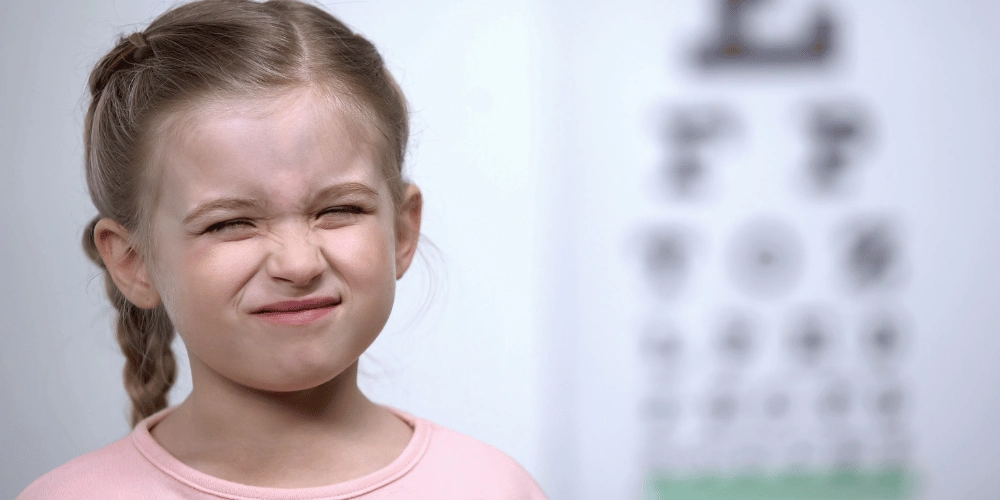The Growing Crisis of Childhood Myopia: From Global Trends to Prevention Strategies
Anúncios
Introduction to the Global Myopia Crisis
Myopia, commonly known as nearsightedness, has emerged as a critical public health issue, especially among young people.
The Global Myopia Study, which reviewed 276 studies and included data from approximately five million individuals, found that nearly one-third of children and adolescents worldwide are affected by this vision impairment.
Anúncios
This alarming trend highlights the growing incidence of myopia across different regions and demographics.
One-Third of Global Youth Affected
The Global Myopia Study’s comprehensive analysis uncovered a stark reality: about a third of children and adolescents are currently experiencing myopia.
Anúncios
This high prevalence rate is worrying because it suggests that vision-related problems are becoming increasingly common among younger populations.
The finding is a significant indicator of a worsening public health crisis that demands immediate attention.
Findings from a Comprehensive Review
The strength of the study lies in its exhaustive analysis, incorporating data from diverse geographical and socio-economic backgrounds.
By reviewing such a broad array of studies, researchers have painted a comprehensive picture of myopia’s impact worldwide.
This inclusive approach underscores that myopia is not only confined to specific regions but is a widespread condition affecting a significant portion of the global youth population.
The findings are published in the British Journal of Ophthalmology.

A Critical Public Health Issue
The surge in myopia cases underscores an urgent public health challenge.
As the rates of myopia continue to climb, particularly among children and adolescents, the condition brings with it a slew of potential long-term complications.
These can include severe eye conditions like retinal detachment and glaucoma, which can significantly affect quality of life.
Moreover, the rising prevalence places a substantial burden on healthcare systems worldwide, highlighting the need for effective public health strategies and interventions.
Understanding the global distribution and disparities in myopia prevalence is crucial in addressing this growing issue.
This involves not only identifying the regions and demographics most affected but also exploring the factors that contribute to these differences.
Geographic Distribution and Disparities
The global distribution of myopia presents a varied landscape influenced by multiple factors.
Recent comprehensive analysis indicates that myopia prevalence is significantly higher in certain regions, particularly urban areas and East Asian countries, while other parts of the world enjoy comparatively lower rates.
High Prevalence in Urban Areas and East Asian Nations
Urban environments are particularly prone to higher myopia rates.
Countries such as Singapore and China are notable examples, where the prevalence among young people is alarmingly high.
Several factors contribute to this issue:
- ☑️Intense Educational Systems: The strong focus on academics begins at an early age, necessitating prolonged periods of near work such as reading and writing.
- ☑️Limited Outdoor Activity: Urbanization limits the time children spend outdoors, reducing exposure to natural light, which is essential for optimum eye health.
Young people in East Asia are more than twice as likely to develop myopia compared to their white peers, pointing towards not just lifestyle but potentially genetic predispositions as well British Journal of Ophthalmology.
Lower Rates in Developing Nations
Contrasting sharply with these high rates are countries like Paraguay, Uganda, Burkina Faso, and Sudan, which exhibit much lower instances of myopia among children.
Factors contributing to this include:
- ☑️Less Intensive Schooling: Children in these regions often spend less time on near work activities traditionally associated with formal education.
- ☑️More Outdoor Activities: The lifestyle in these countries allows for more outdoor physical activities, providing more exposure to natural daylight.
Moderate Prevalence in the UK and Ireland
Countries like the UK and Ireland experience moderate rates of around 15%.
This is significantly lower than the rates observed in East Asian urban centers but still noteworthy.
Factors influencing these figures include:
- ☑️Urban Living: Similar to East Asia, urban environments in these regions also present challenges with reduced outdoor exposure and increased close-up work.
- ☑️Genetic and Lifestyle Factors: Genetic predisposition, along with early educational pressures, contribute to the moderate prevalence observed.
These patterns underscore the multifaceted nature of myopia prevalence, highlighting the need for tailored public health interventions aimed at mitigating this growing issue.
As we delve further into understanding the primary factors contributing to these trends, it becomes evident that a coordinated approach is critical for managing the myopia crisis.
Key Contributing Factors
Genetic Predisposition
Genetics play an undeniable role in the development of myopia.
Children with one or both myopic parents are significantly more likely to develop the condition themselves.
This genetic predisposition is particularly noticeable in certain ethnic groups and communities, reflecting in their higher incidences of myopia.
Environmental Factors
Urban living and reduced outdoor activity also contribute to rising myopia rates.
City dwellers, especially children, often spend less time outdoors compared to their rural counterparts.
Urban environments limit exposure to natural light, which is essential for proper eye development.
The prevalence of screen time and the lack of physical activities further strain young eyes, exacerbating the issue.
Intensive Early Education Systems
The nature of early education systems, especially in East Asian countries, is an additional factor.
These systems prioritize academic success from a young age, leading to extended periods of near work such as reading and writing.
This intense focus on academics, combined with limited outdoor time, pushes the eyes into a myopic state.
As we understand these contributing factors to myopia, it’s clear that tailored public health interventions are necessary to address the growing crisis effectively.
The East Asian Phenomenon
The prevalence of myopia in East Asian countries has reached alarming heights, making it a critical public health concern.
East Asian youth are over twice as likely to develop myopia compared to their white peers, with urban centers in Singapore and China showing the highest rates.
This dramatic difference is driven by a combination of genetic, environmental, and lifestyle factors.
Genetic and Environmental Influences
Children in East Asia often inherit a genetic predisposition towards myopia.
However, genetics alone cannot explain the rapid rise in cases.
Environmental factors play a significant role.
Urban living conditions, characterized by limited outdoor activities and high levels of air pollution, contribute to the development of myopia.
Children spend less time outdoors, missing out on the protective effects of natural light exposure.
The Role of Early and Intensive Education
One of the most significant contributors to the high myopia rates in East Asia is the region’s intense academic focus.
Educational systems prioritize rigorous study schedules, starting from a very young age.
Children are often engaged in prolonged periods of near-work activities, such as reading, writing, and screen use.
These activities put a strain on their eyes, increasing the risk of developing myopia.
Alarmingly High Rates in Urban Centers
Singapore and China are notable for their exceptionally high myopia rates among youth.
In urban centers of these countries, the confluence of academic pressure and limited outdoor time exacerbates the problem.
These children face immense educational demands, leaving little room for relaxation and outdoor play, both of which are crucial for healthy eye development.
The East Asian phenomenon highlights the urgent need for public health interventions and innovative solutions that balance academic pursuits with outdoor activities for better eye health.
Addressing this issue requires a multifaceted approach, involving educators, health professionals, and policymakers to create environments conducive to reducing myopia rates.
Public Health Implications
The surge in myopia cases carries substantial public health implications.
Increasing prevalence means a rising risk of severe eye conditions like retinal detachment and glaucoma, which are highly concerning.
These conditions can lead to vision loss or even blindness if not managed properly.
The growing myopia pandemic, therefore, places an increasing burden on healthcare systems worldwide, necessitating urgent and comprehensive public health strategies.
Rising Risk of Severe Eye Conditions
As myopia rates climb, the incidence of associated severe eye conditions is likely to rise concurrently.
Retinal detachment and glaucoma are among the most severe complications.
Retinal detachment involves the retina peeling away from its underlying layer of support tissue, which can lead to permanent vision loss if not treated promptly.
Glaucoma, on the other hand, involves damage to the optic nerve, which is crucial for good vision.
Increasing Burden on Healthcare Systems
The global rise in myopia translates to a strain on healthcare systems worldwide.
With more individuals requiring eye care, from regular check-ups to advanced treatments, healthcare providers will face increased pressures.
This situation is exacerbated by the need for long-term management of conditions like myopia and its associated severe complications.
Need for Comprehensive Public Health Strategies
Addressing the myopia crisis requires a multi-pronged public health approach.
Key strategies should include:
- ☑️Awareness Campaigns: Public awareness campaigns to educate communities about myopia’s risks and preventive measures can play a crucial role.
- ☑️Early Detection Programs: Implementing routine eye examinations for school-aged children to detect and manage myopia early.
- ☑️Encouraging Outdoor Activities: Promoting outdoor activities as part of school and community programs to ensure children receive adequate natural light exposure.
- ☑️Innovative Approaches: Exploring innovative solutions such as smart classroom designs that reduce eye strain and public health campaigns tailored to high-risk regions.
Tackling the crisis head-on involves the concerted effort of healthcare systems, governments, educational institutions, and families.
Ensuring proactive measures such as these are in place will be crucial in mitigating this escalating issue.
Prevention and Future Directions
Exploring steps to curb the growing prevalence of myopia is critical.
Early detection and lifestyle adjustments can make a significant difference in managing this public health crisis.
The Importance of Early Detection
Regular eye check-ups are essential for identifying myopia early, allowing for timely interventions.
Parents should ensure their children receive routine eye examinations, even if no issues are apparent.
Early diagnosis can help to slow the progression of myopia through corrective lenses and lifestyle adjustments.
Balanced Lifestyle
A well-rounded lifestyle, one that includes sufficient outdoor activities and natural light, can help mitigate myopia.
Encouraging children to spend more time outside rather than indoors can play a vital role in preventing the condition.
Innovative Solutions
Adopting innovative approaches can help combat myopia.
Smart classroom designs, incorporating more breaks and promoting activities that involve looking at distant objects, can significantly reduce eye strain in students.
Additionally, public health campaigns aimed at raising awareness about myopia and promoting a balanced lifestyle are essential.
It’s crucial to take these steps seriously to prevent further escalation of myopia rates.






